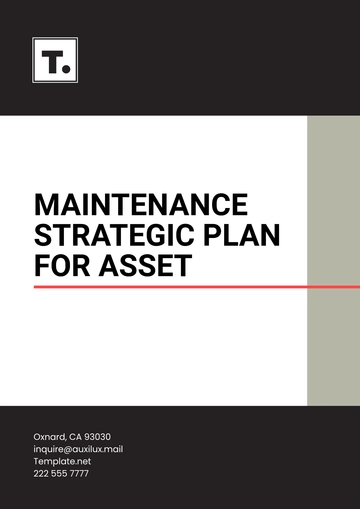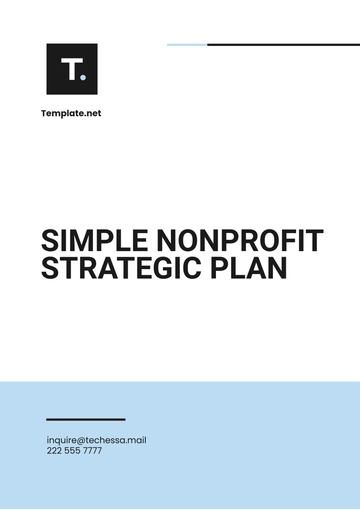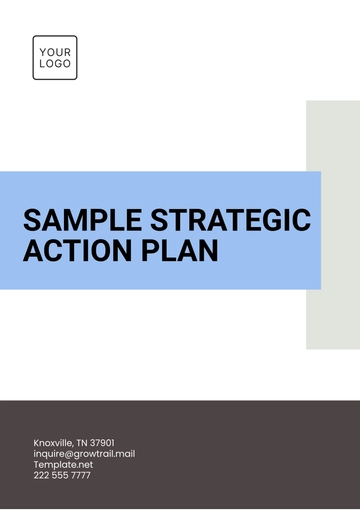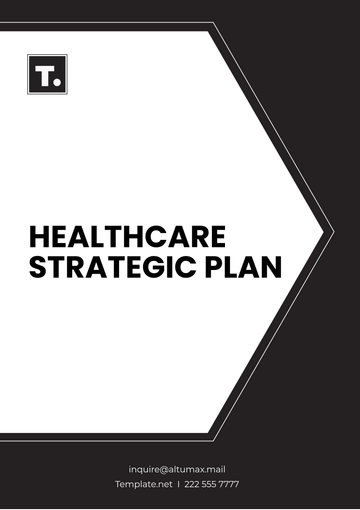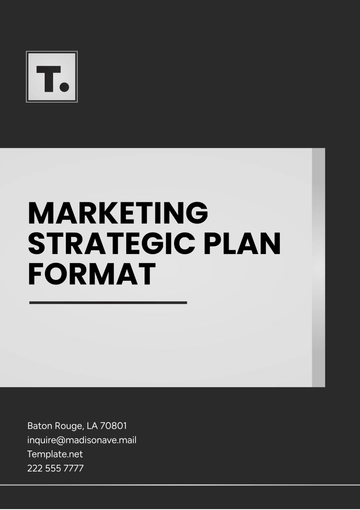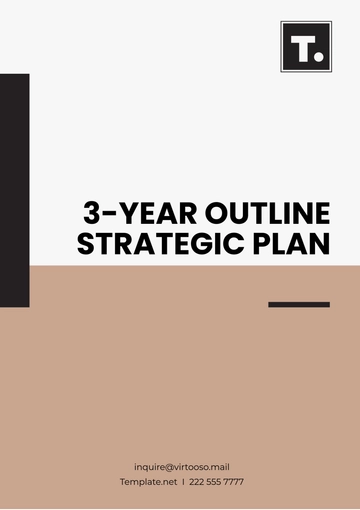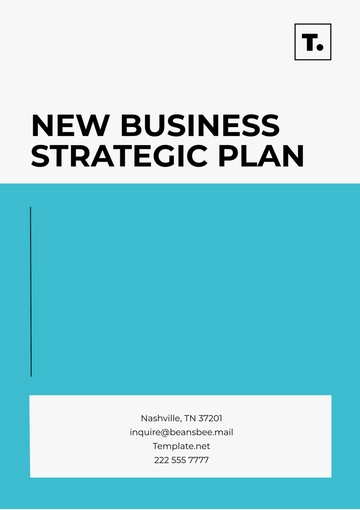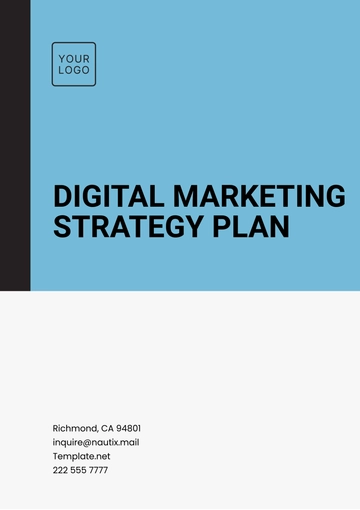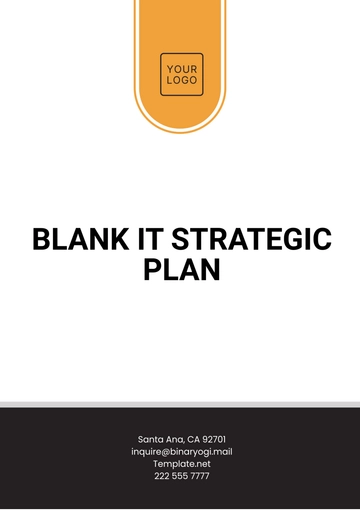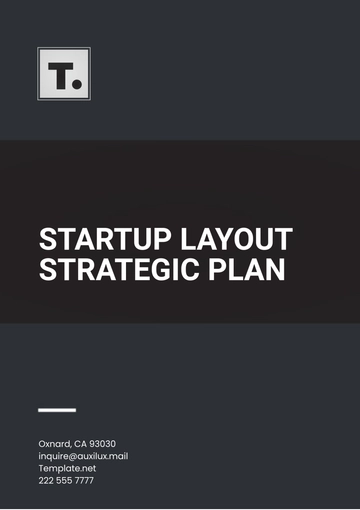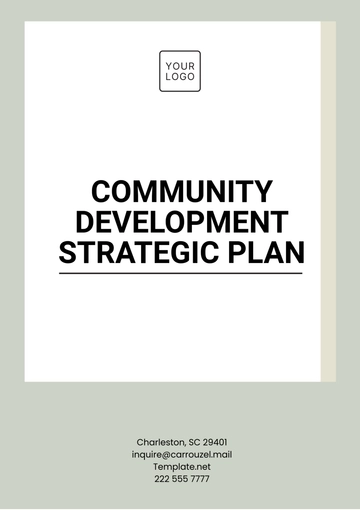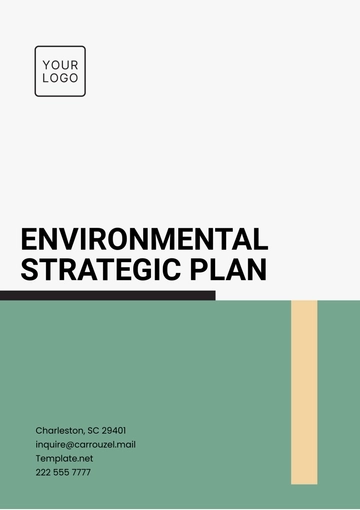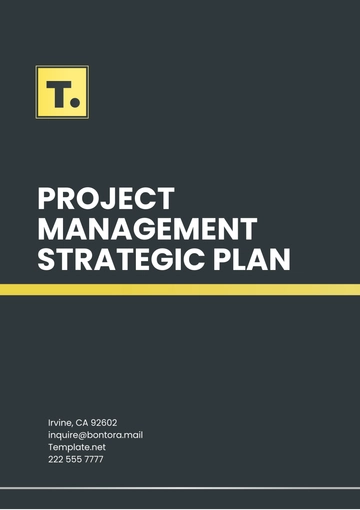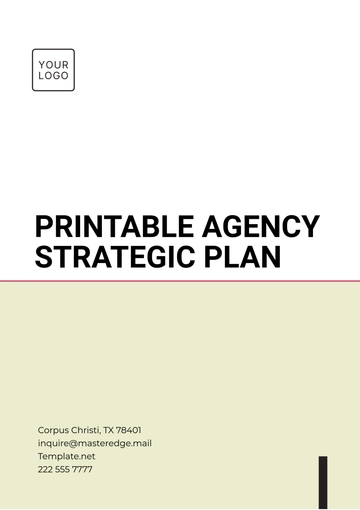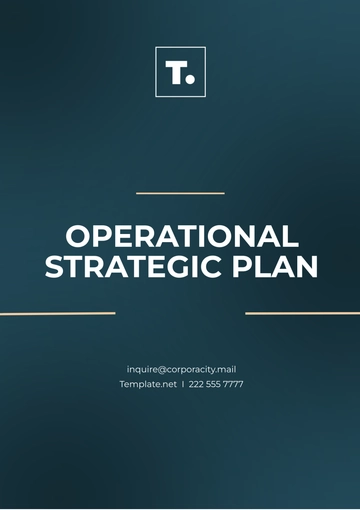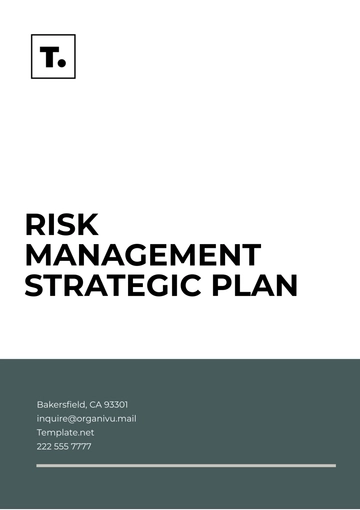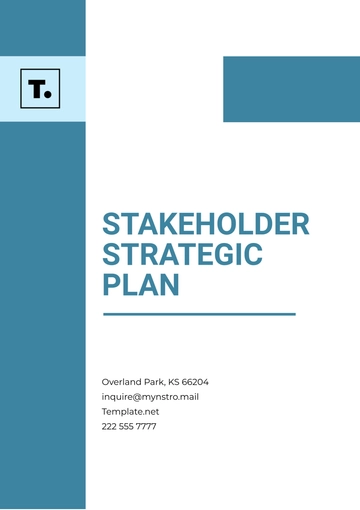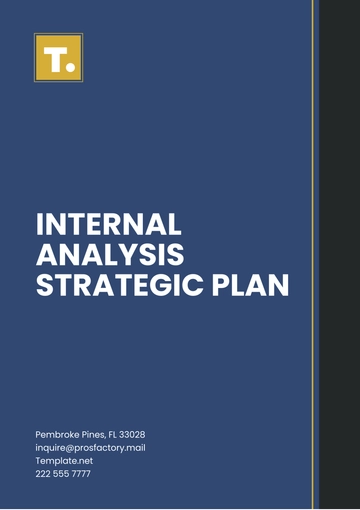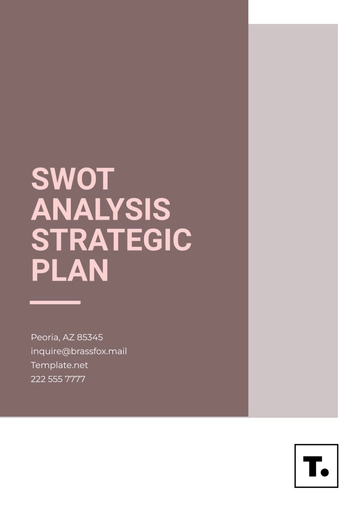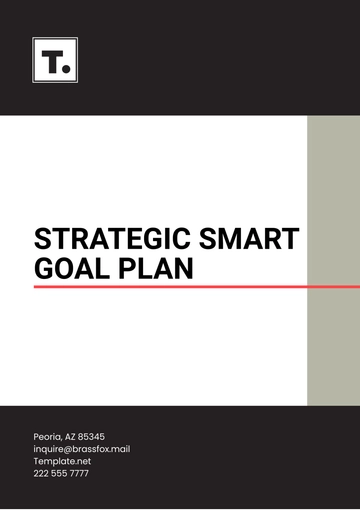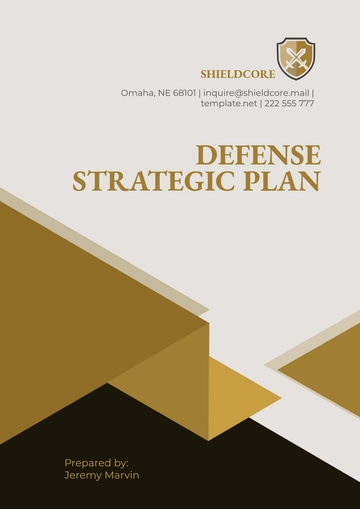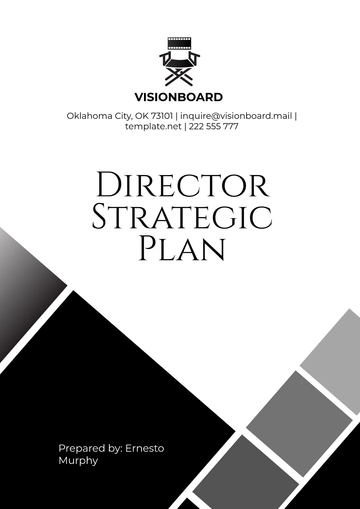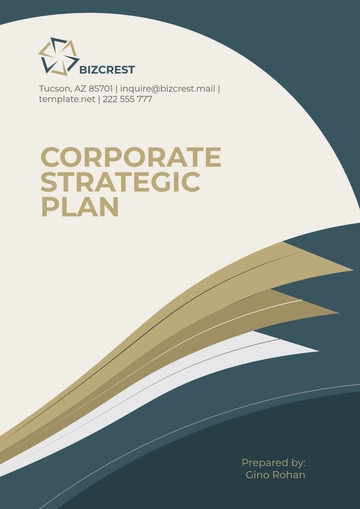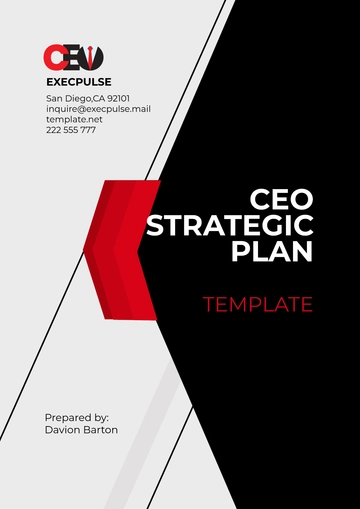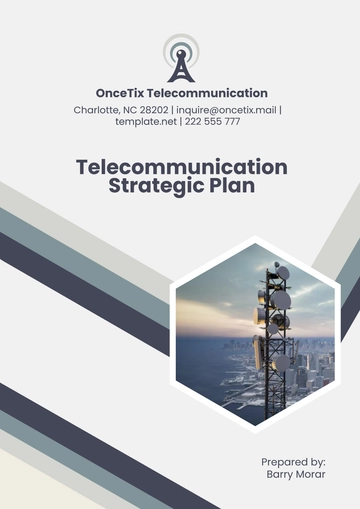Free Real Estate HR Strategic Plan
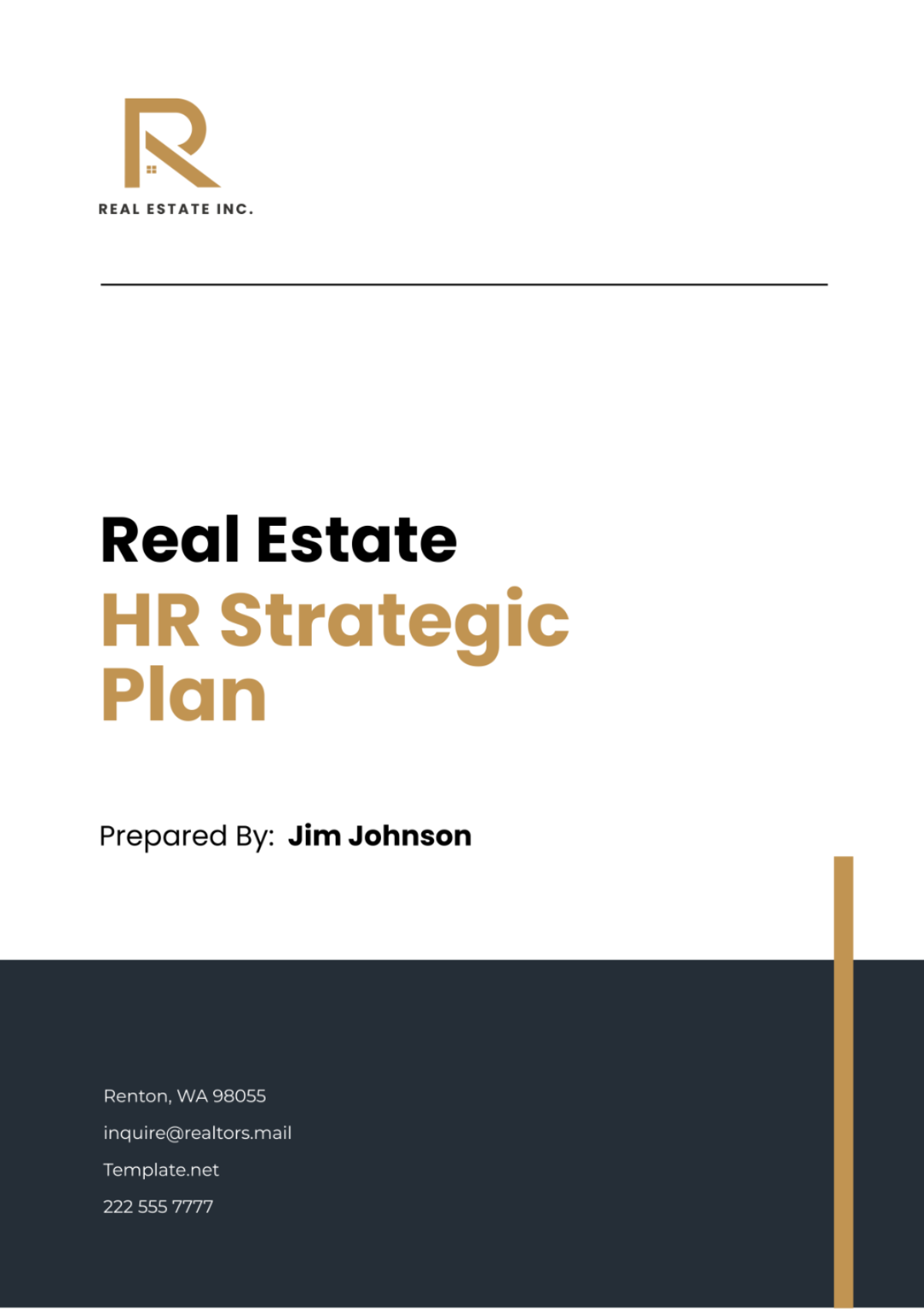
I. Executive Summary
In the rapidly evolving real estate market, we recognize the paramount importance of aligning our human resources strategy with our overarching business objectives. Our strategic plan is designed to position our workforce at the forefront of industry developments, ensuring that we not only meet but exceed our performance goals. Through a comprehensive analysis and forward-thinking approach, we have identified key strategic priorities and actions that will enable us to harness the full potential of our human capital. Here are our strategic actions:
Recruitment Excellence: Enhance our recruitment processes to attract top talent with a focus on diversity and innovation.
Skill Development: Implement a robust training program tailored to developing the skills necessary for navigating current and future market challenges.
Employee Retention: Develop a comprehensive retention strategy that emphasizes career progression, work-life balance, and competitive compensation.
Leadership Cultivation: Introduce a leadership development program aimed at nurturing our next generation of leaders from within.
Performance Alignment: Refine our performance management system to ensure it is tightly aligned with our strategic business goals, encouraging high performance and rewarding excellence.
II. Introduction
In today's dynamic real estate environment, the strategic importance of human resources cannot be overstated. Our people are our most valuable asset, and the key driver of our success. Recognizing this, our HR strategic plan is focused on cultivating a highly skilled, motivated, and adaptable workforce capable of leading our organization into the future. By aligning our HR objectives with our business strategy, we aim to not only respond to market changes but to anticipate and shape these changes, securing our position as a leader in the real estate industry.
III. Business Strategy Alignment
Our organization's business strategy is centered on growth, innovation, and market leadership in the real estate sector. We aim to achieve this by expanding our portfolio, embracing technological advancements, and delivering unparalleled customer service. To support this strategy, our HR function must be adept at attracting, developing, and retaining individuals who are not only skilled in traditional real estate practices but are also innovative thinkers and technologically savvy. Here are the requirements needed:
Talent Acquisition: Implement strategic recruitment initiatives to attract professionals with expertise in emerging real estate technologies and innovative business models.
Skills Enhancement: Design and deliver training programs that equip our team with cutting-edge skills in market analysis, digital marketing, and customer relationship management.
Cultural Alignment: Foster a company culture that values innovation, teamwork, and customer-centricity, encouraging employees to contribute creatively to our business objectives.
Adaptive Leadership: Develop leaders who are capable of navigating the challenges of a rapidly changing industry, inspiring their teams, and driving performance.
Operational Efficiency: Utilize HR technology to streamline operations, improving efficiency and allowing the HR team to focus on strategic initiatives.
IV. Workforce Analysis
A. Current Workforce
Our organization's strength lies in the diversity and skills of our workforce. We currently boast a team that spans a range of demographics, each bringing unique perspectives and expertise to our real estate operations. To better understand our current standing and to strategize for the future, we have compiled a comprehensive analysis of our workforce demographics and skill sets.
Demographic | Percentage |
Under 30 | 25% |
30-50 | 50% |
Over 50 | 25% |
Skill Area | Employees with Expertise |
Sales | 60% |
Digital Marketing | 30% |
Real Estate Analysis | 40% |
Customer Service | 70% |
B. Future Workforce Needs
Anticipating future market trends and organizational growth, we have identified several critical areas where we will need to bolster our workforce. The table below outlines the anticipated needs for our future workforce, emphasizing areas of expansion and new competencies required to maintain our competitive edge.
Need | Description |
Tech Savvy | Employees proficient in the latest real estate technologies. |
Innovative | Professionals who can drive innovation in service and process. |
Leadership | Leaders capable of guiding teams through market shifts. |
CRM | Enhanced skills in managing and nurturing client relationships. |
C. Gap Analysis
Our analysis indicates a gap between our current workforce composition and the future needs of our organization. While we have a strong foundation in sales and customer service, there is a clear need for increased proficiency in digital marketing, real estate technology, and strategic leadership. Addressing these gaps is crucial for our sustained growth and market leadership, requiring targeted recruitment and development strategies.
V. HR Strategic Objectives
To bridge the gap between our current capabilities and future needs, we have defined several strategic HR objectives:
Enhance Recruitment Processes: Develop targeted recruitment campaigns to attract professionals with expertise in digital marketing, real estate technology, and innovative business practices. By broadening our talent pool, we aim to infuse our workforce with fresh perspectives and critical skills.
Comprehensive Training and Development: Implement a continuous learning environment that encourages skill enhancement and professional growth. This includes specialized training in emerging real estate technologies, leadership development programs, and innovation workshops to keep our team at the forefront of industry advancements.
Foster a High-Performance Culture: Cultivate an organizational culture that rewards creativity, initiative, and excellence. Through clear performance metrics, recognition programs, and competitive compensation, we aim to motivate our employees to achieve their best and align their efforts with our strategic goals.
Strengthen Employee Retention: Enhance our retention strategies by offering competitive compensation packages, career development opportunities, and a supportive work environment. By recognizing and addressing the needs and aspirations of our employees, we aim to reduce turnover and build a committed, engaged workforce.
VI. HR Policies and Compliance
A. Key HR Policies
In alignment with our strategic objectives and to foster a work environment that is productive, respectful, and compliant with all legal requirements, we have established several key HR policies. These policies are designed to guide our actions and decisions, ensuring that we maintain high standards of professionalism and ethics in all our operations.
Equal Employment Opportunity Policy: All employment practices, including but not limited to recruitment, hiring, training, promotion, compensation, benefits, transfers, layoffs, and terminations, are conducted without regard to race, color, religion, sex, national origin, age, disability, or genetic information. We are dedicated to providing a work environment where every employee is treated with respect, dignity, and fairness.
Workplace Harassment Policy: We are committed to creating and maintaining a work environment free from harassment, where all individuals are treated with respect and dignity. Harassment of any kind, including sexual harassment and bullying, whether it occurs in the workplace, at work-related functions, or through electronic communications, is unacceptable and will not be tolerated. Any reported allegations of harassment will be investigated promptly and thoroughly, and if substantiated, swift and appropriate corrective action will be taken.
Data Protection and Privacy Policy: We comply with applicable data protection laws and regulations and expect all employees to adhere to these standards. This policy covers the collection, use, storage, and sharing of information, emphasizing the importance of maintaining the highest levels of integrity and confidentiality. Employees are trained on data protection practices, and we implement robust security measures to prevent unauthorized access or breaches.
Remote Work Policy: Eligibility for remote work is based on job functions, performance history, and managerial approval. The policy outlines expectations for communication, availability, data security, and use of company resources. Employees working remotely are expected to maintain a professional work environment and adhere to all company policies, ensuring that remote work is both effective and efficient.
Professional Development Policy: We offer a range of development opportunities, including training programs, workshops, conferences, and certification courses. Employees are encouraged to identify their professional development goals in collaboration with their managers. The organization provides support through financial assistance, time off for educational purposes, and access to learning resources.
B. Compliance with Labor Regulations
Ensuring compliance with labor laws and regulations is paramount to our operations. We are committed to adhering to all relevant U.S. labor regulations, not only to fulfill our legal obligations but to protect and support our workforce effectively. The following are key regulations that our HR policies and practices are designed to comply with:
Fair Labor Standards Act (FLSA)
Occupational Safety and Health Act (OSHA)
Family and Medical Leave Act (FMLA)
Americans with Disabilities Act (ADA)
Equal Employment Opportunity Commission (EEOC) Regulations
VII. Risk Management
In our dynamic and competitive industry, proactive risk management is crucial to safeguarding our operations and ensuring the continuity and success of our strategic initiatives. We have identified several potential risks to our HR objectives, evaluated their likelihood and potential impact, and devised appropriate mitigation strategies to address them.
Risk | Likelihood | Impact | Mitigation Strategy |
Talent Shortage | High | High | Develop a compelling employer brand, enhance recruitment strategies. |
Non-compliance with Regulations | Medium | High | Regular training on regulatory changes, conduct compliance audits. |
Low Employee Engagement | Medium | High | Implement engagement programs, regular feedback mechanisms. |
Leadership Gap | High | High | Establish a leadership development program, succession planning. |
VIII. Implementation Plan
The successful execution of our HR Strategic Plan requires careful planning and coordination. We have outlined key steps, along with their timelines and responsibilities, to ensure effective implementation and alignment with our strategic objectives.
Step | Timeline | Responsibility |
Conduct Skills Gap Analysis | Q1 | HR Department |
Update Recruitment Strategy | Q2 | Recruitment Team |
Launch Leadership Program | Q3 | Learning & Development |
Implement Engagement Surveys | Q4 | HR Department |
Review Compensation Packages | Q1 | Compensation Team |
IX. Monitoring and Evaluation
To ensure the strategic plan’s effectiveness and alignment with our objectives, we will employ Key Performance Indicators (KPIs) to measure success and guide adjustments.
KPI | Target Value |
Employee Turnover Rate | Reduce by 10% |
Leadership Program Graduates | 15 per year |
Employee Engagement Score | Increase by 20% |
Time-to-Hire | Reduce by 15 days |
Our HR Strategic Plan is a living document that will be reviewed and adjusted annually to reflect changes in the business environment, workforce dynamics, and organizational goals. Additionally, quarterly reviews will be conducted to assess progress against KPIs and to make timely adjustments to our strategies and actions as needed. This iterative process ensures our HR initiatives remain relevant and effectively contribute to our organization’s success.
- 100% Customizable, free editor
- Access 1 Million+ Templates, photo’s & graphics
- Download or share as a template
- Click and replace photos, graphics, text, backgrounds
- Resize, crop, AI write & more
- Access advanced editor
Strategize your HR goals with the Real Estate HR Strategic Plan Template from Template.net. This editable and customizable template provides a structured approach to developing your human resources strategy, aligning with your real estate business objectives. Perfect for forward-planning, it's editable in our AI Editor tool, laying the groundwork for a successful HR roadmap.
